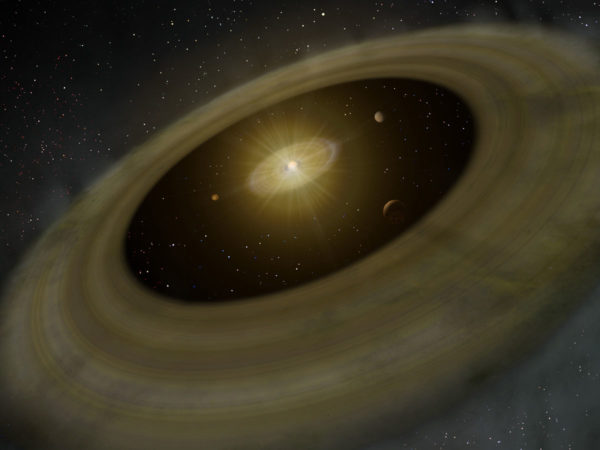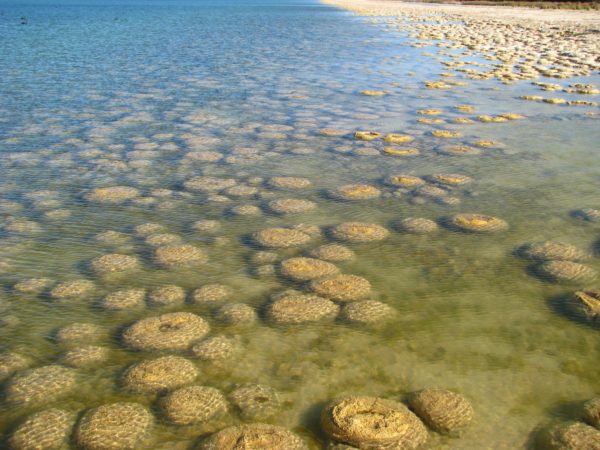"It was the Venus I had prayed to, it was my prayer, though I had no such words. They filled my eyes with tears and my heart with inexpressible joy." -Ursula Le Guin
If you were to rewind the Solar System to the very beginning, with only imperceptibly different initial conditions, how often would Earth emerge looking like it does today: teeming with life? And how often would the other worlds -- Venus or even Mars -- emerge overflowing with stable, long-term life either instead or in addition to Earth?
 Protoplanetary disks, which all solar systems are thought to form with, will coalesce into planets over time. Illustration credit: NAOJ.
Protoplanetary disks, which all solar systems are thought to form with, will coalesce into planets over time. Illustration credit: NAOJ.
While we've often assumed that Earth had the right conditions for a likely life-rich outcome, we're quite possibly biased by where we've come of age, and by the fact that we only know our own Solar System in detail. But as exoplanet data continues to improve and pour in, we have a whole world of other possibilities we should remember to consider.


Venus' practically non-existent spin would (IMO) have been a problem. Even if atmospheric conditions had turned out differently, we'd still be looking at a planet that had, for practical purposes, a dark side and a light side and a thin twilight region in the middle (that would move slightly every year).
AIUI, Venus' thick atmosphere is a *good* thing in that it serves to redistribute the sun's energy more evenly across the planet's surface. A thinner, more transparent atmosphere would create a planet that is one half baked Mercury and one half icy Neptune.
There is so much we don't know that hypothesizing about life being possible on Venus is little more than fantasy. As pointed out, the rotation of Venus is a problem and we have no idea why it is what it is. Back in 2012 it was discovered the rotation of Venus had slowed by a whopping 6.5 minutes in only 16 years. Before it was discovered no one even thought that was possible, and even now no one really has a good handle on it.
Scientists cite the importance of plate tectonics to the formation of life but Stromalite fossils date back to 3.5 billion years ago while accepted theory states plate tectonics on Earth didn't start until half a billion years later. Life seemed to do just fine before plate tectonics.
What is key? What isn't? We're still in the era of making guesses.
FYI, stromatolites of Hamelin Pool, West Australia, are about 3,000 years old, their predecessors having died of old age. Not bad for a pile of lime excreta from cyanobacteria.
:)